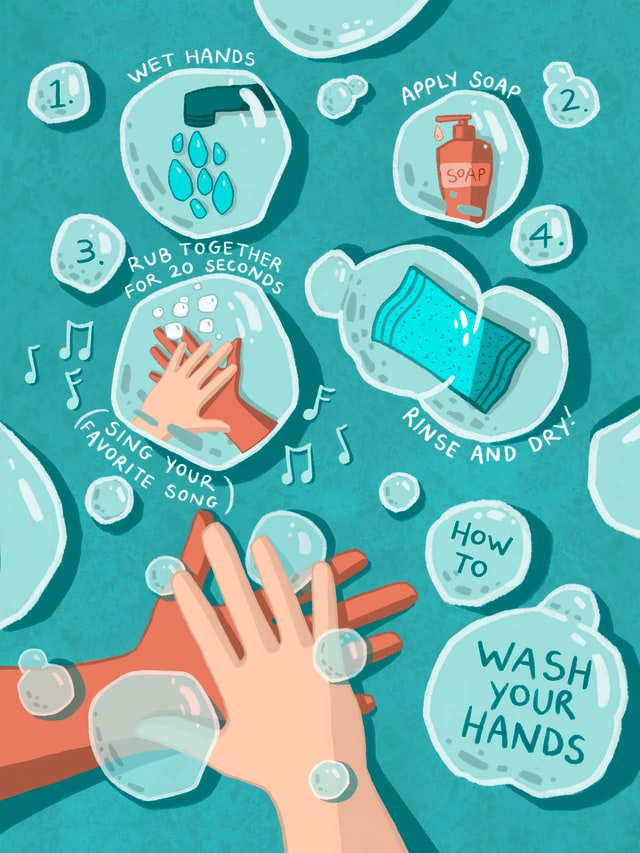SLK Blog
Adapting to the “New Normal”: Going Back to Work With COVID-19 Measures

Photo by Nastuh Abootalebi on Unsplash
The Coronavirus crisis is far from over, yet many businesses are opening their doors again, after receiving appropriate directives from the government. There are pros and cons on either side of the opening/remaining closed argument. The pros of keeping businesses shut down are minimizing the risk of exposure and minimizing company liability. The major con is that staying closed hurts the business’ financial health and stability as well as the overall economy, as people need to be able to work to maintain their livelihood. Opening too soon and without the right measures in place could be catastrophic as there is still a lot to learn about this epidemic.
There is no right or wrong answer here, for employers and employees alike. If you fear the “new normal”, you are not alone. Read on, and inform yourself about your rights, and ways in which you can protect yourself both legally and health-wise.

Employees
Circumstances vary so much from employer to employer and employee to employee. Many employees cite that they are fearful of going back to work for several reasons including, exposing themselves and others, problems with finding childcare, fear of contracting coronavirus etc. Meanwhile, other employees welcome the routine after months of being closed at home, even though the current environment is not ideal.
Fear is “a distressing emotion aroused by impending danger, evil, pain, etc., whether the threat is real or imagined; the feeling or condition of being afraid.” (Dictionary.com). Fear is intangible, it is an emotion, therefore, unless concrete evidence exists to explain and justify that fear, legally, it is not applicable as a reason to refuse to go back into work. A person’s fear has to be founded for them to refuse to go to work if not, they risk losing their jobs. An employee has to go back to work to discuss their preoccupations with their employers and only when an employer refuses to make amends to unsafe work scenarios will a third party be called in to investigate.
All of this does not mean that you should just give in and go in without hesitation or questions. As an employee you are expected to be protected, which is why informing yourself and having an open line of communication with your employer is so critical.
Below are a few things to take into consideration when returning to physical employment:
- Remote Work: Is remote work a possibility? If it remains a possibility, then you can try speaking with your employer and discussing a solution that works for both of you. Maybe remote work may be possible in an alternating manner (working remotely a certain percentage of hours and being at the office for a small percentage of hours), that could still be better than going to work full time.
- If you commute by using public transportation or have problems with finding adequate childcare, bring those issues up with your employer so you can come up with a suitable solution that works for all.
- Protection: You have a right to be protected. Ask your employer what protections are in place. If your workplace does not supply something you find essential (i.e. hand sanitizer for every desk) you can i) ask them if they would be willing to provide the item or ii) bring your own to keep yourself safe. If you go back to work and you see that your workplace is mishandling the health security measures you have a right to complain and to start an investigation.
- Investigations can be started only once you start going to work, they cannot be started before examining the health and safety measures in place). Once an investigation is started you are not obliged to go back to work until the investigation is completed. Inform yourself of your rights before you start working that way you can measure your expectations.
- Ask Questions, Make Suggestions: If something is bothering you, speak to your employer. This is an unprecedented scenario for all of us, and we are all operating with very new guidelines. If you see room for improvement in terms of protections for staff and customers/clients, those improvements can only benefit your workplace if you voice them.
- Questions to consider:
- Will surfaces be sanitized more often?
- How will airflow be controlled?
- Will physical plastic barriers be provided?
- Will PPE be provided? Will sanitizer be provided?
- What is the procedure for someone who refuses to wear a mask?
- What happens if someone shows COVID symptoms?
- Will there be daily screening questions?
- Social Distancing: A big question to ask your employer if you work close to others is how social distancing will be handled. Will the furniture be moved? Will meetings be in larger meeting areas where social distancing can be practiced? Will you be working in a kitchen alone? Will you be sharing tools with others? These questions will largely depend on your type of workplace.
- Questions to consider:
All in all, it important to go back to work confident that all precautions are being taken, by yourself and your employer. Safety should be the number one priority for all.

Photo by Brooke Lark on Unsplash
For Employers
Employers have had a difficult couple of months, from closing down to restricting and sometimes diverting their business, and now opening with severe limitations. The majority of employers will have to implement rules to follow to protect their employees, as well as others that come into contact with their business. It isn’t an easy task given that there is a significant lack of information and guidance, as a society, our knowledge about COVID-19 remains sparse. Nonetheless, it is your job to implement the safety guidelines to ensure the safety of all.
Here are some suggestions:
- Write and implement new Health and Safety Policies: Health and Safety policies are currently the centres of all businesses, and employers need to review them and rewrite them to take into account recent developments.

Photo by United Nations COVID 19 Response on Unsplash
- Consider whether your workspace can be operated safely: Even though the government has allowed your business to open, it doesn’t always mean you should open. If you do open, what measures should you take? What considerations should you think about?
- Identify hazards and mitigate risk: You know your business better than anyone, which is why the bulk of the burden will fall on your shoulders to identify areas and procedures that could be problematic and changing them to conduct your business most safely.
- Create a COVID guide for employees to read and follow: Include all necessary information on how your company will handle COVID regulations and the steps taken to protect everyone.
- Make sure to inform employees of the safety measures you are implementing and how their work-life will change so that they can adapt.
- Explain what you can provide, and what you are not able to provide as well. It allows employers to take measures they see fit to protect themselves. For example, not all businesses may have the economic capacity to buy antibacterial dispensers for everyone and may only be able to have them for the common areas. Letting employees know allows them to come prepared for that, and if they wish to bring some for themselves, they can.
- Consider Work From Home (WFH) arrangements with employees that can WFH: Not all departments may be able to WFH, but some may. Instead of bringing everyone back in, consider having departments working from home to decrease the risk of infection and also decrease the number of employees that are coming in, allowing you to mitigate risk.
- Develop policies for high-risk employees: Employees that have weak immune systems or employees that have immediate family who are immunocompromised need to be acknowledged in your plans so that you put together a wholesome response and are not left with surprises when an employee refuses to go back to work and you are left short-staffed.
- Develop a plan for employees with childcare issues: With schools closed and childcare options severely limited, finding a solution for your employees can become essential. Do not let your business suffer because you did not make contingencies.
- Keep the information Flowing: As the employer, employees look to you for guidance. Make sure you are transparent in information-sharing and inform them of any plans in development in regards to the current situation.
- Ask for Feedback: Your employees may be able to help you in crafting your response. Make sure they feel encouraged to share their thoughts with you.

Photo by United Nations COVID 19 Response on Unsplash
- Create a COVID infection plan: You need to plan for the worst. Make sure you put together a crisis plan in case an employee contracts the virus. Follow all the steps in crisis planning, that way you don’t leave anything unanswered.
- Be flexible: Everyone is dealing with COVID changes, nobody is immune. Use your empathy to craft a plan with a human focus for your employees. Everyone has different circumstances make sure you consider that when making decisions.
- Further research: Here are some useful resources to help you in this new stage of your business:
- COVID Knowledge Center by Samfiru Tumarkin Law Firm
- FAQ by Canadian Union of Public Employees
- Rights & Responsibilities by the Government of Canada
- Guidance for Employers and Businesses by the City of Toronto
This information and resources should give you a head start in asking the right questions before going back to work, and asking employees to return to work. If you have any questions, don’t hesitate to reach out to us. As a small business, we are navigating many of the same hurdles you are. We are here for you.

